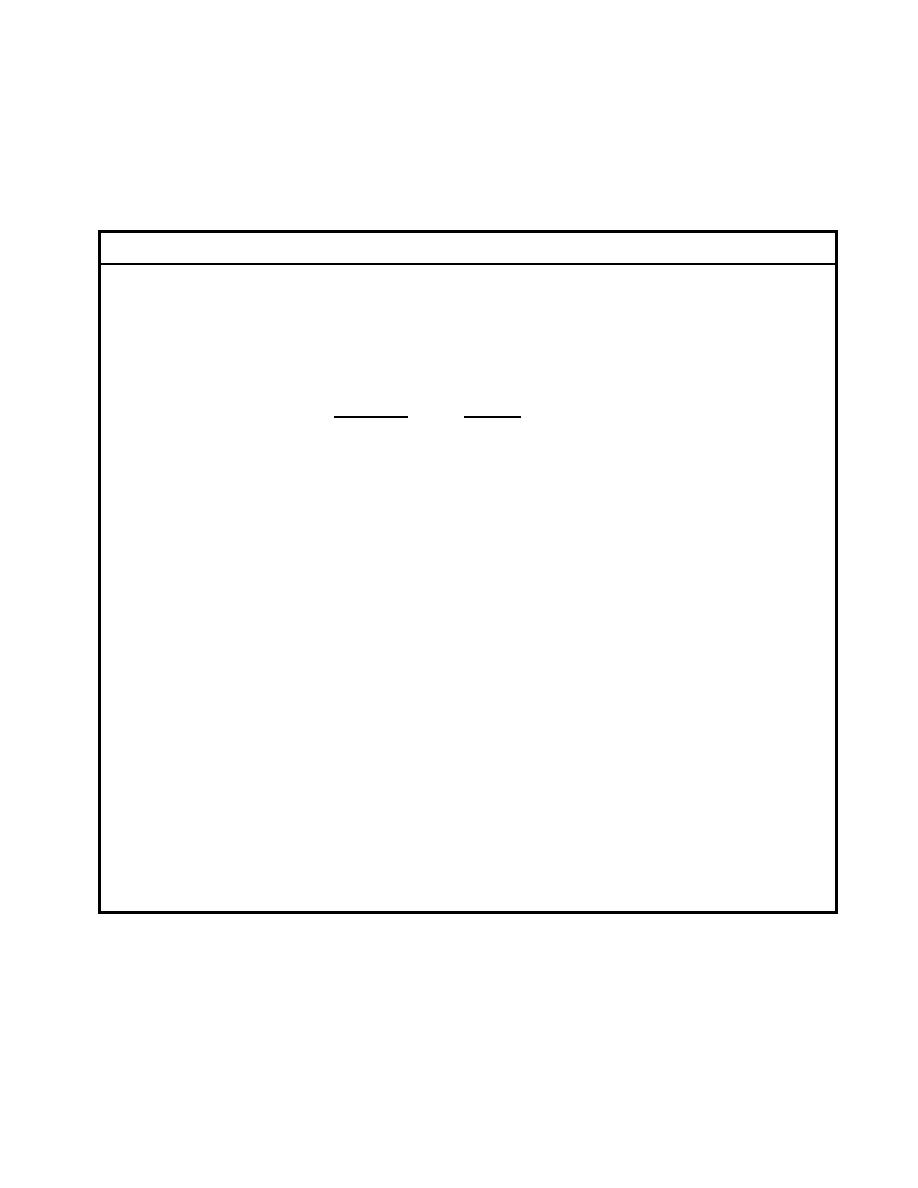
MIL-HDBK-1005/9A
Table 4
Sewer Structures
Structure
Type
Where to Use
Details and Special
Considerations
Manhole
Regular
Terminally on all lines; at
Refer to NFGS-02530.
all junctions and changes
Lower invert through manhole a
of direction; at changes in
distance equal to expected loss
invert elevation or slope.
of head in manhole, plus 0.8
Otherwise, according to
times any change in sewer size.
spacing shown below:
For junction manholes, check
Pipe Size
Max.
which upstream invert is
spacing
critical in determining outlet
(in.(mm))
(ft(m))
invert. Raise top of manhole
≤18(450)
above possible flooding level.
400(120)
18-48(450-1200) 500(150)
≥48(1200)
600(180)
Drop
When difference between
Refer to NFGS-02530
inlet and outlet inverts
exceeds 2 ft (0.6 m)
For difference less than 2 ft
(0.6 m), increase upstream
sewer slope to eliminate drop.
Siphons
Inverted
For carrying sewers under
Maintain velocity of 3 fps (0.9
obstructions or waterways.
m/s). Use not less than two
barrels with minimum pipe size
of 6 in. (150 mm). Provide for
convenient flushing and
maintenance.
Use WPCF MOP FD-5 for hydraulic
design.
Interceptor
--
Where discharge of existing
Take special care against
Sewers
sewers must be brought to a
infiltration due to depth or
new concentration point.
proximity of surface water.
Traps and
Grease and
On outlets from subsistence
Displacement velocity 0.05 fps
Inceptors
Oil
buildings, garages,
(0.015 m/s). Grease removal--in
mechanical shop, wash pits,
absence of other data use 300
and other points where
to 400 mg/L. Provide for
grease or oil can enter
storage of one week's grease
system.
production (one day if
continuous removal is
provided). Length = twice depth
28


 Previous Page
Previous Page
